Original text by Marina Belova
I've had very thick cotton embroidery threads (Gunold Cotty 12) for some time, but I still don't understand where they can be used, and what can be embroidered with them. For they appear rather crude to the eye. Perhaps, some of you have used them before and will be so kind to share their experience? Share your thoughts, please!
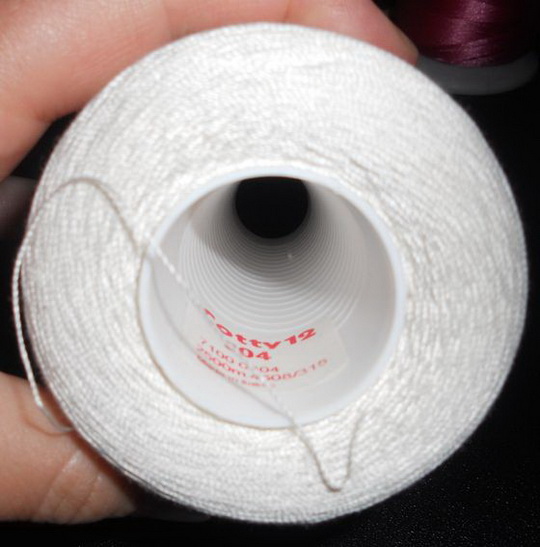
The purpose of these threads, as I see it, is to get a result that looks very much like it was embroidered by hand. But how to do that? Even the manufacturer's brochures don't shed much light on that question but give only the most general recommendations on how to work with these threads and what is their purpose.
The recommendations are as follows:
- #90/14 SES or, in case you have a more dense and heavy fabric, #100/14 SES needle. It's better to use a special needle — like the one for metallic threads — instead of a standard one because it has the bigger eye (DBx7ST by Sсhmetz).
- The bobbin thread is a standard one.
Not much for a start.
The color chart is not so big — just 52 colors; apparently, it's due to the difficulties with the coloring of the natural fibers. But, in any case, it's not so little.
I can add what is on the tip of my tongue when I'm looking on this thread:
- Its higher fluffiness will require the more frequent cleaning of the machine.
- I'll need to play with the tension regulator to increase the tension.
- Reduce the machine embroidery speed
- Don't forget to choose the appropriate stabilizer
- Chances are that the design digitizing will be rather like the one with acrylic (woolen) threads, and the general recommendations are as follows:
- Redwork designs are splendid.
- You can try motifs which have longer stitches.
- Basic density value is 0.8—1 mm.
- Remove all stitches shorter than 1.5—2 mm.
- Increase the stitch length to 3—8 mm at least.
- No or minimal understitching. The density of the underlay is low, the stitches are long.
- No designs with lots of layers.
- You can upscale an existing design, digitized with an ordinary #40 thread, for 20% without a stitch recount.
Well, I need to work with what scarce information I have and experiment.
This is what I got after embroidering the first sample of the design:
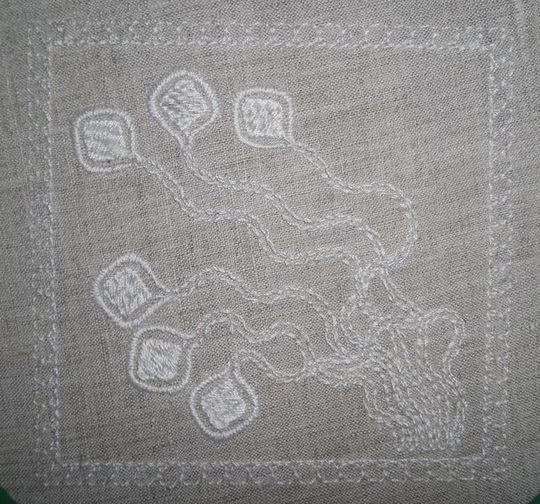
Tension regulation proved to be quite a task: I needed to screw the handles until they were tight. Despite that measure, the thread continued to loop. It is most likely that this happened because of a standard needle which I use for #110 acrylic threads. This is how the wrong side of the embroidery looks like:
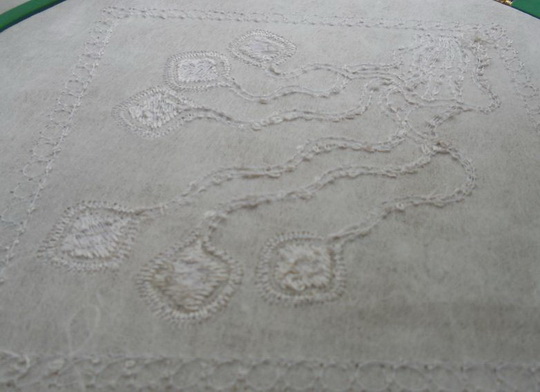
And these are the conclusions I arrived at: it's better not to use these threads in a double or a triple run — it will look too crude. One run is enough, for the thread is rather thick. And if you still want to make the stitch thicker, bean stitch or backstitch is the best solution.
Optimal satin stitch lengths are 3—7 mm. Shorter stitches (1.5—3 mm) are good, too, but they are a bit too short. I liked the stitch density set at 0.8—0.85: it gives a good coverage and there is no slacking. I used very little understitching, except edge run in the fills.
Automatic tie-offs work good, thought I manually increased the stitch length in them. The trimmer cut this thread every other time, and, judging from the sound it made, not without difficulty. Therefore, one should reduce the number of trims in the design or leave the jump stitches.
After the first sample, I tried to embroider the flower with satin and running stitches only. This is what I got:
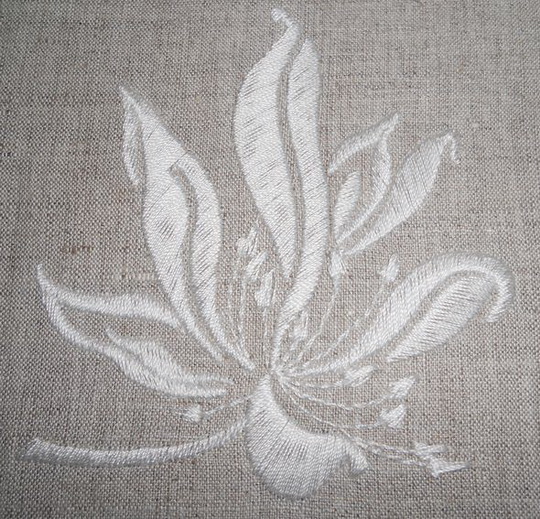
As you can see in the photo, the long (over 8 mm) stitches begin to slacken and the background shows through. From all appearances, I'll have to give up the fixed density value and choose density according to the stitch length. For this sample, I decided to change my needle for a #90 one, which helped me to get rid of the loops. The stitch count here is only 2000, which is a very small number for a 110x110 mm design.
Having embroidered the flower, I remembered that I had the home-produced pure silk threads stashed somewhere:
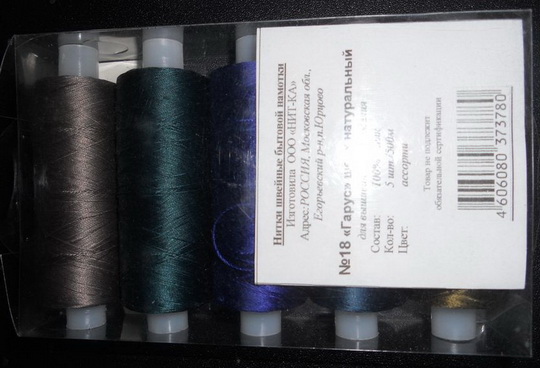
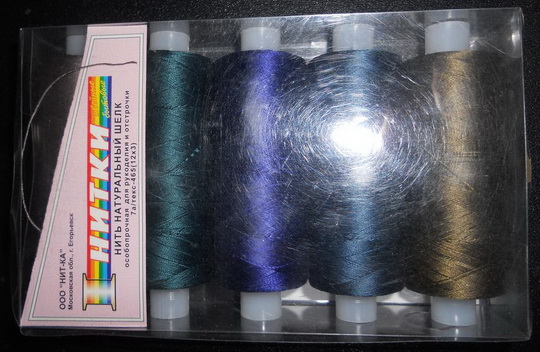
I checked the direction of their twist, and they turned out to be left twist threads. I compared them to the cotton threads regarding their thickness.
They turned out to be very much alike, though the silk ones were slightly thinner. Or, they seemed to be thinner because of the lack of the fluff,
so I decided to embroider the same flower with them, in case it would turn out good. Then I could use this kind of thread for various projects.
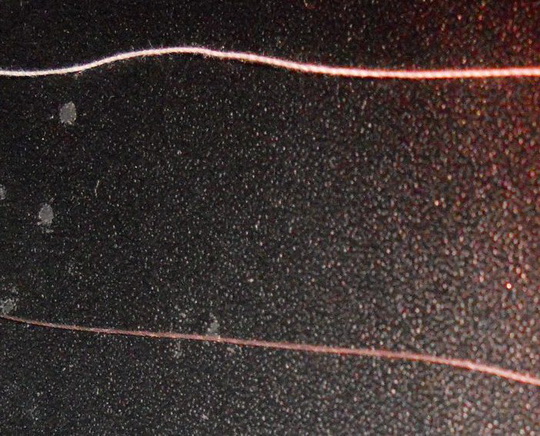
But they were a disappointment. Despite the enhanced strength, promised by the manufacturer, the thread kept breaking, especially on the stitches shorter than 3 mm (the cotton thread didn't break at all). Also, silk proved to be very tricky when it came to tension regulation. If I adjusted the tension according to the particular stitch length, the thread would loop on longer stitches, and the bobbin thread would show on the right side on shorter stitches. So, I agonized over it for a while and let it all hang out — perhaps, I'm not yet ready for these threads. This is my best attempt so far:
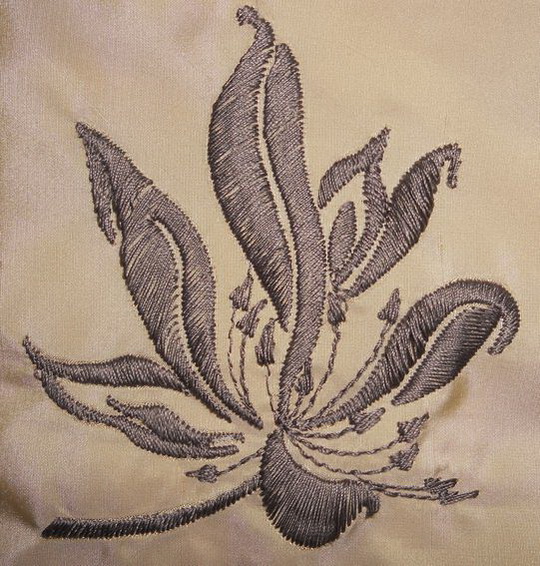
Such are these enigmatic thick threads. It seems likely that this kind of threads is only good for decoration of the details.

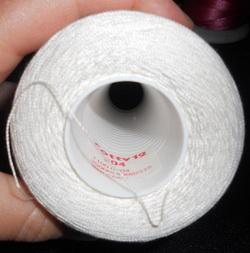

There are no reviews to display.